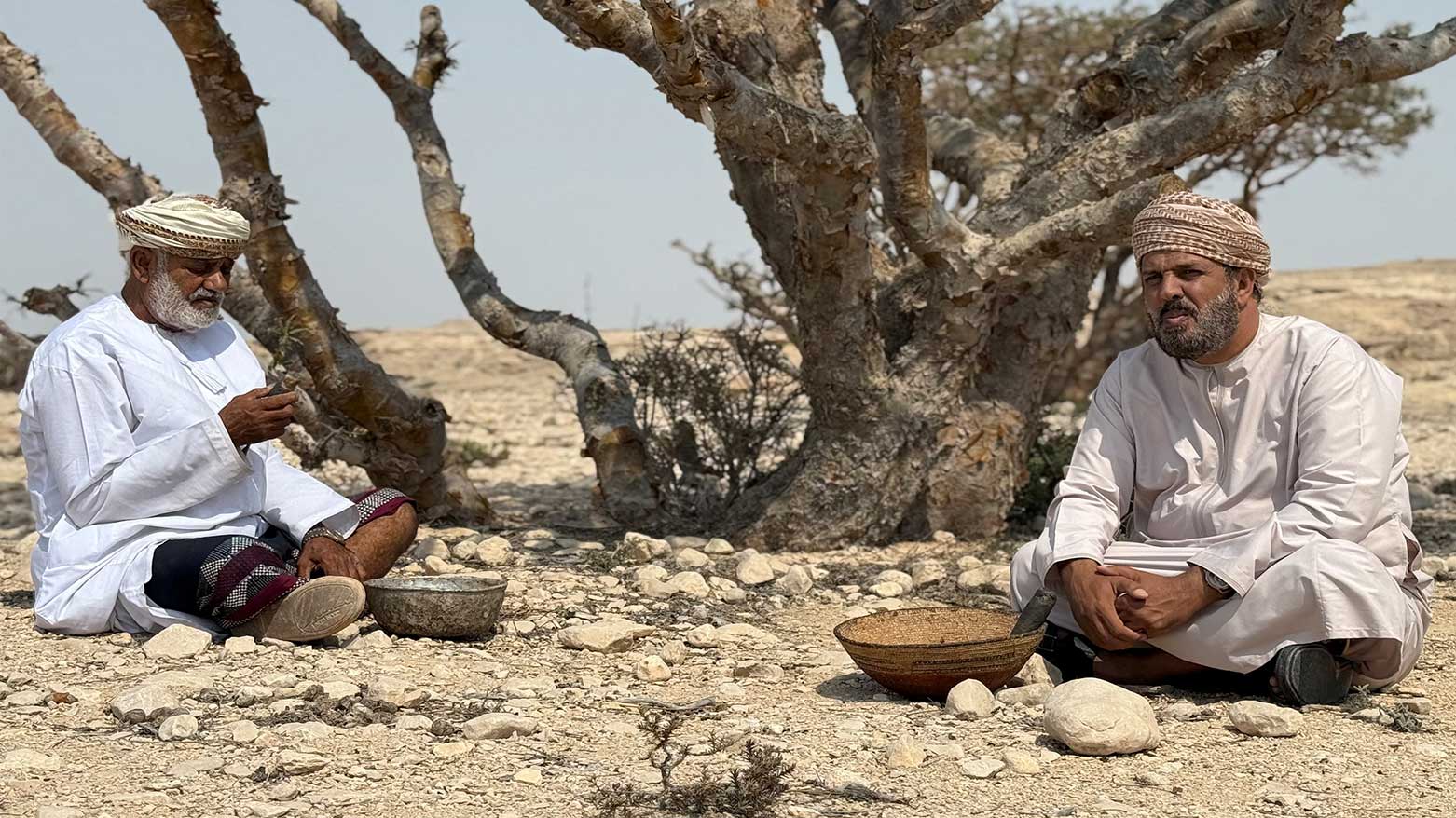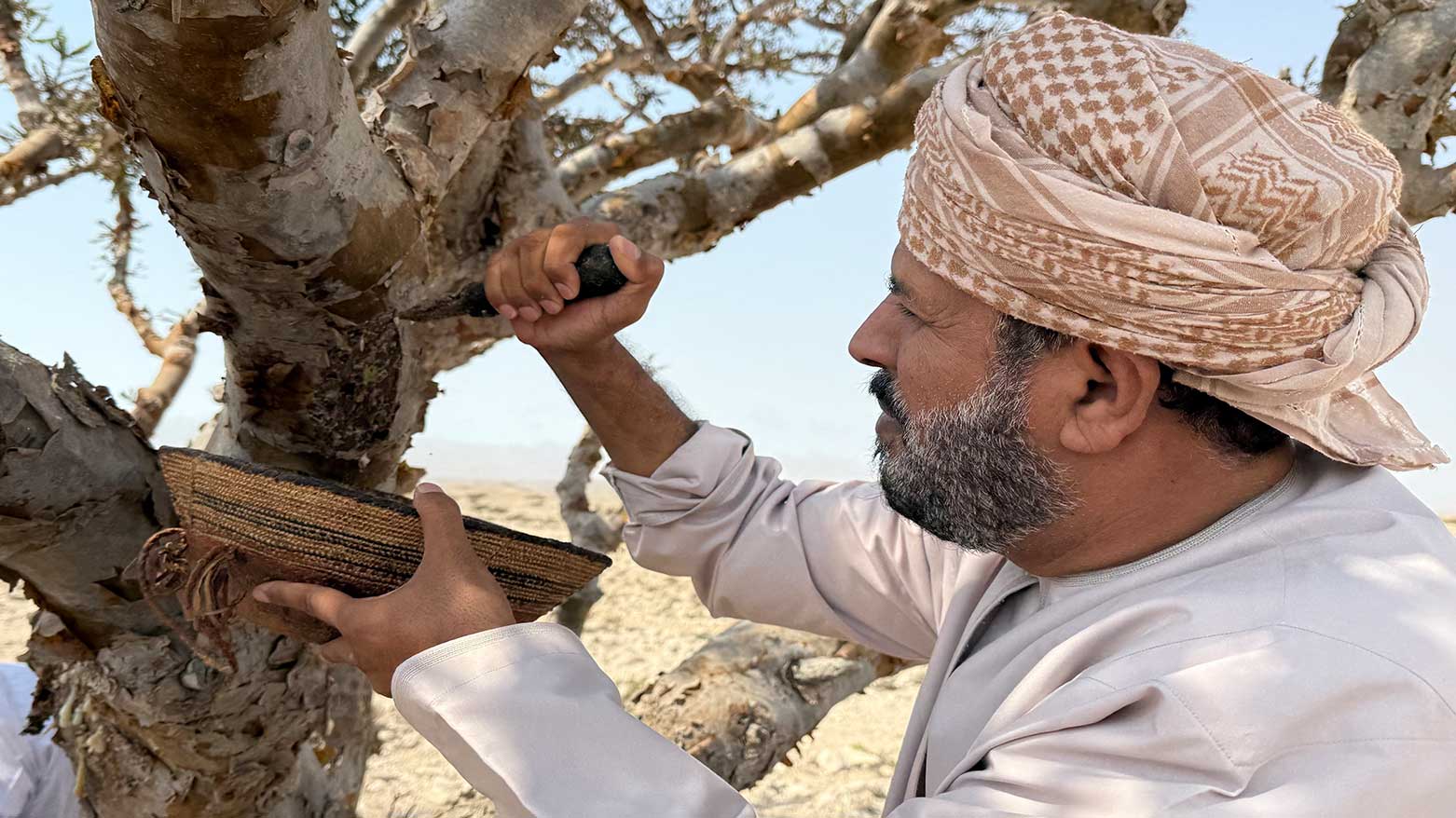
Oman’s “White Gold”: Frankincense Trees of Dhofar Sustain Centuries-Old Trade
ERBIL (Kurdistan24) — In the arid Dawkah valley of southern Oman, far from the country’s vast oil and gas fields, lies a different kind of treasure: frankincense trees whose fragrant sap has been harvested for millennia and is still revered today as “white gold,” according to an AFP report.
The valley, home to about 5,000 Boswellia trees, is the world’s largest frankincense reserve. Their trunks yield kernels that release a distinctive woody aroma, valued both locally and globally.
“For us, frankincense is more precious than gold. It’s a treasure,” said harvester Abdullah Jaddad, pausing in the shade of a tree.
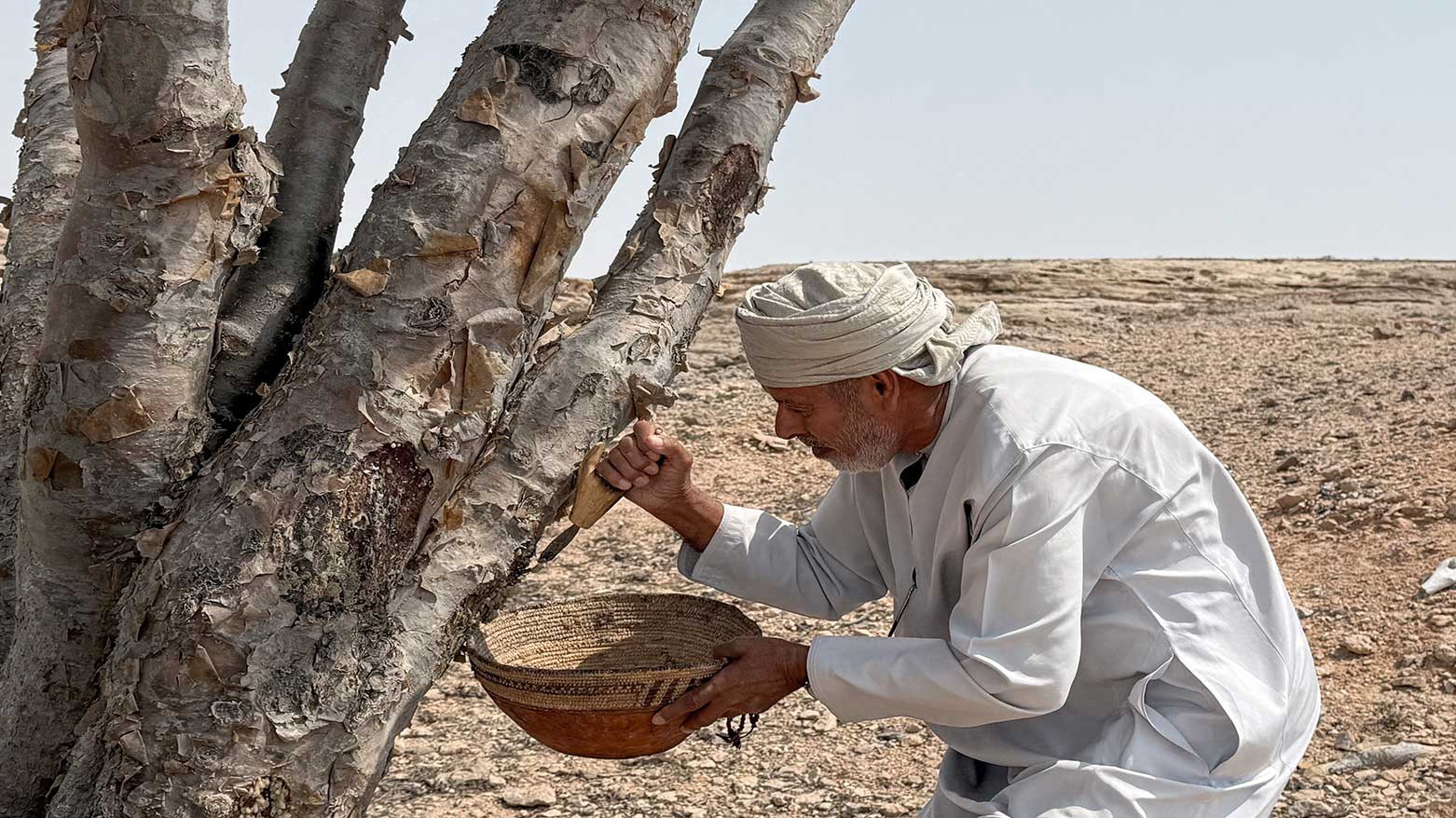
Frankincense resin, collected as hardened beads or distilled into oil, finds its way into perfumes, skincare, incense, and traditional medicine. High-end Omani perfume house Amouage perfumes, which manages the reserve, markets its luxury scents worldwide, with one limited edition frankincense-based fragrance once fetching nearly $2,000.
The Dawkah valley, designated a UNESCO World Heritage Site in 2000 as part of Oman’s Land of Frankincense listing, is one of the few remaining places on Earth where the Boswellia tree flourishes.
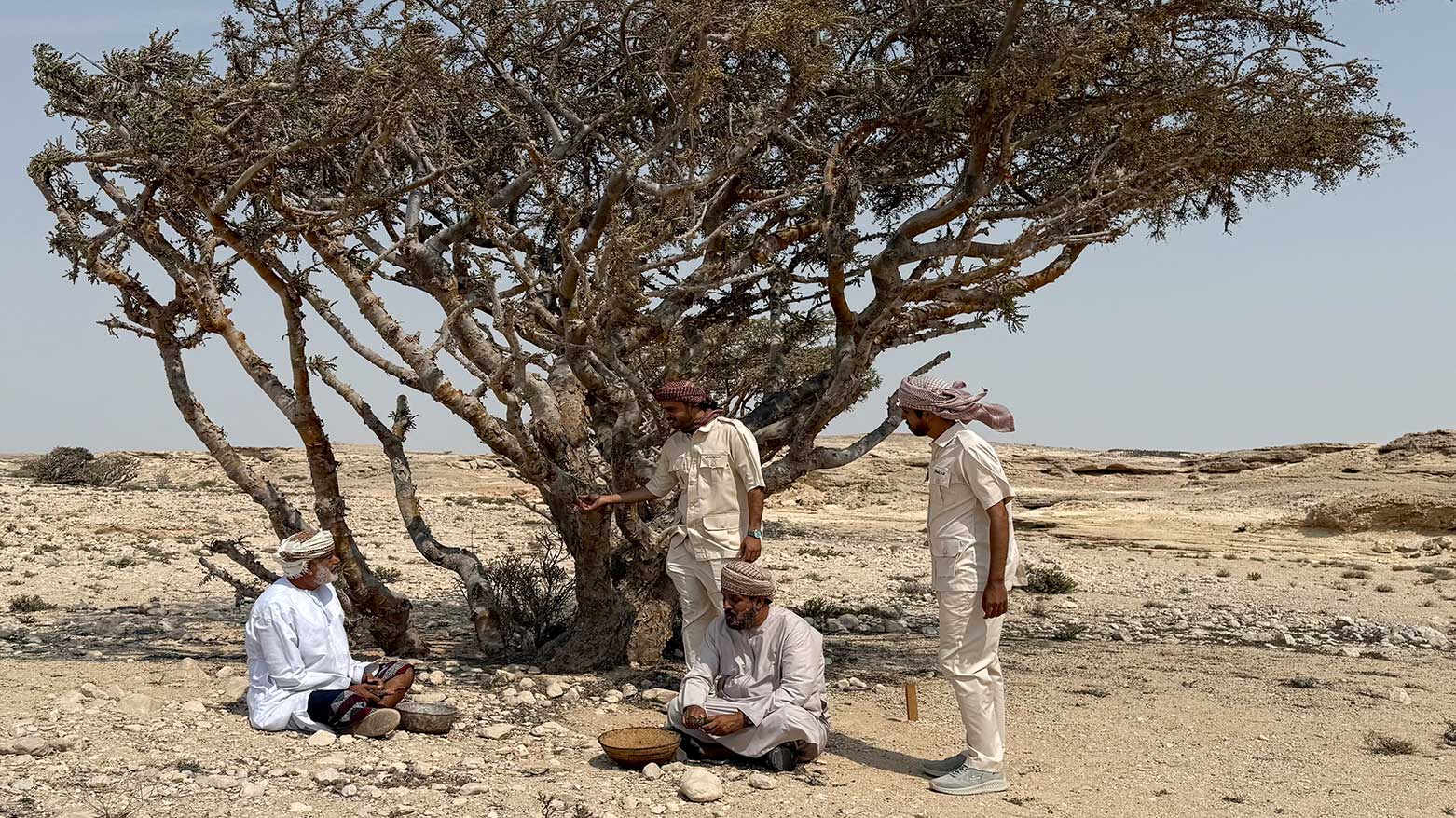
Alongside ancient sites such as Khor Rori, Al Baleed, and Shisr, it stands as a testament to the centuries-old frankincense trade that once linked Dhofar to Mesopotamia, Egypt, Greece, Rome, India, and China.
“Frankincense had roughly the same value as oil today,” noted Ahmed al-Murshidi, head of the Khor Rori archaeological site.
Harvesting remains an artisanal skill. Resin is tapped by making precise incisions in the bark, a delicate process described by locals as dealing with a tree “quick to anger.” Improper cuts can kill the plant.
“We strike the tree in specific, small spots, about five times, to preserve it,” explained reserve worker Musallam bin Saeed Jaddad.
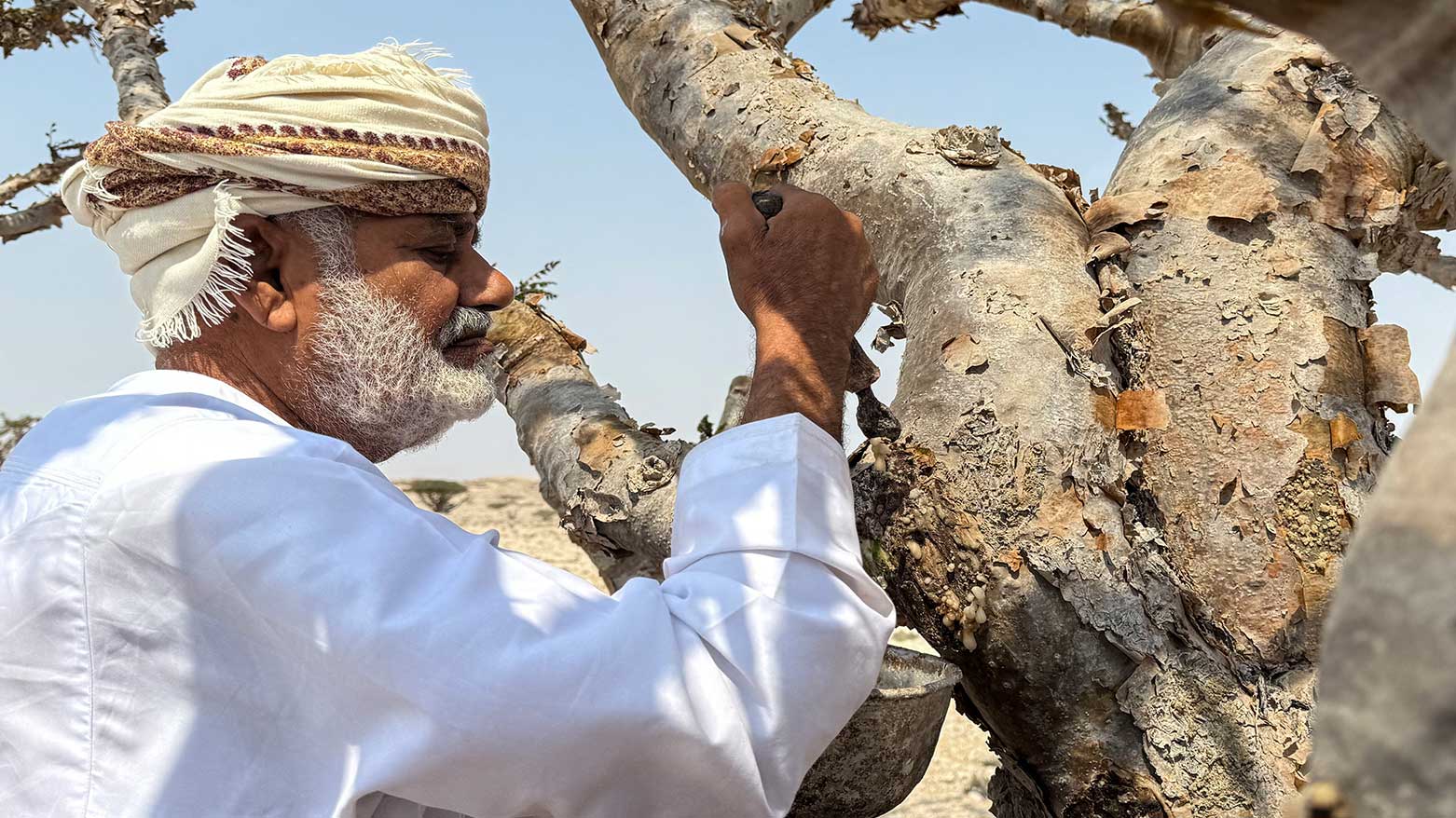
Preservation has become central to Oman’s approach. Since 2022, Amouage has partnered with local authorities to protect the reserve, providing jobs while ensuring only a fifth of the trees are tapped at any given time.
Each tree is coded and monitored, with donors invited to contribute to conservation in exchange for frankincense gifts. Plans are underway to build a distillery on-site to process resin locally, rather than importing it from abroad.
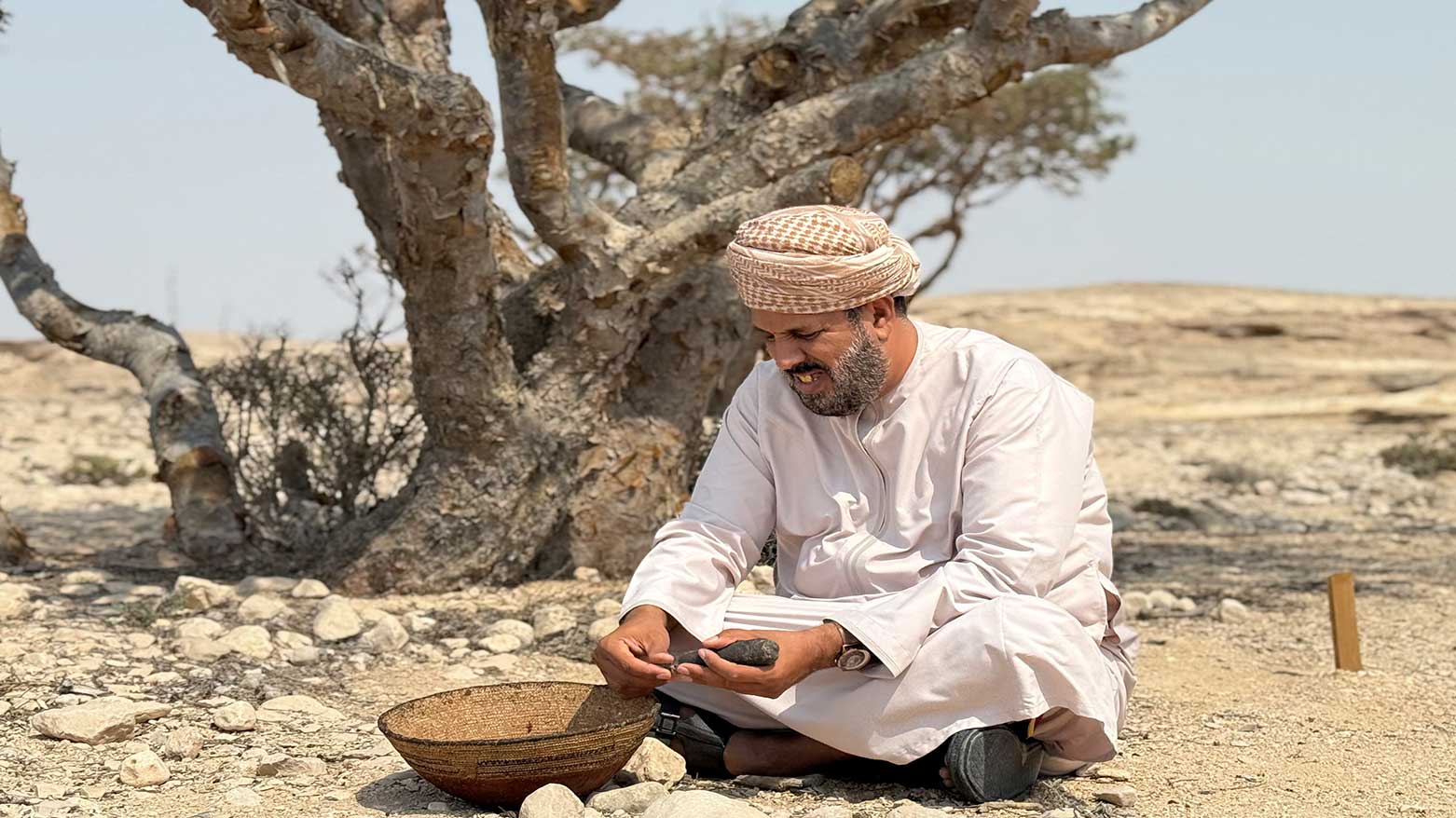
Still, frankincense habitats face mounting pressures. Infrastructure projects, including road building, threaten wild-growing trees outside reserves.
“We bring those trees to the reserve. We have saved about 600 trees so far,” said supervisor Mohammed Faraj Istanbuli.
For Omanis, however, frankincense is more than just a commodity. It is a cultural emblem and a living link to an ancient trade route — a resource they regard as both sacred and enduring, justifying its nickname as the nation’s true “white gold.”
